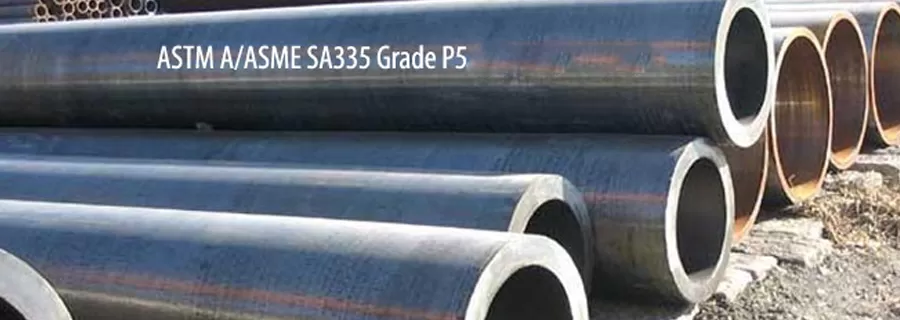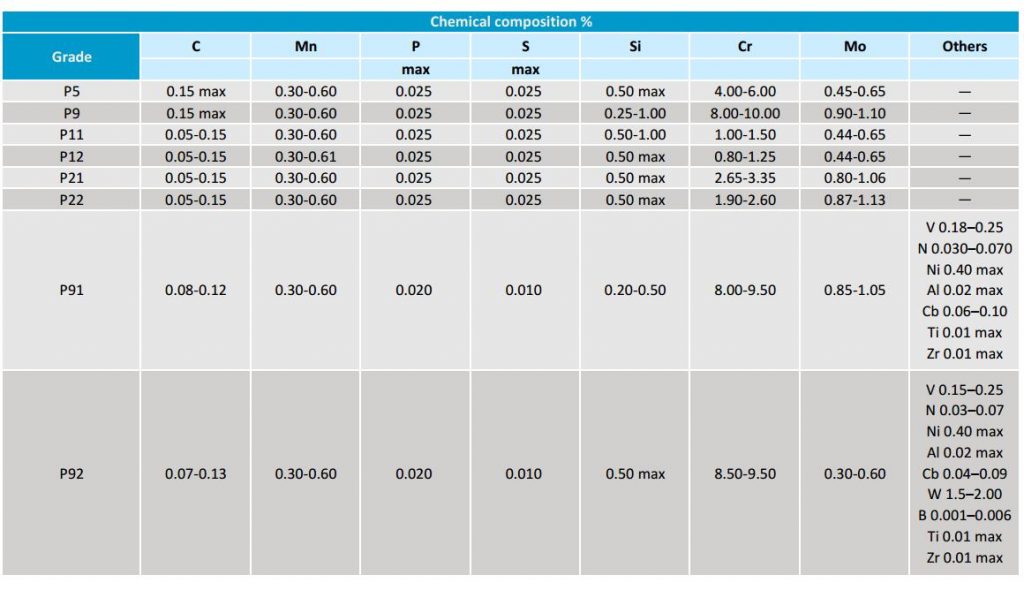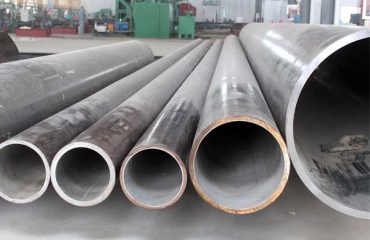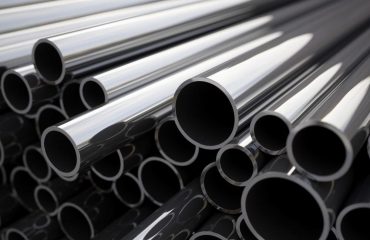
Differences between ASTM A335 P5 and Grade P9 , P11 ,P12 alloy pipe ?
ASTM A335 is a standard specification for seamless ferritic alloy-steel pipe for high-temperature service. The specification covers nominal wall and minimum wall chrome-molybdenum (also known as Cr-Mo, or Cr-Moly) alloy steel pipe intended for use at high temperatures. The steel material shall conform to chemical composition, tensile property, and hardness requirements.
P5 is a chromium-molybdenum alloy steel grade which is commonly used in the power generation industry. It is a low alloy steel which has a content of chromium and molybdenum ranging from 0.5 to 9% by weight. It has a higher tensile strength and yield strength than other common steels such as A106 and A53.
P9 is a 9% chromium-molybdenum alloy steel grade which is commonly used in the power generation industry. It is a low alloy steel which has a higher content of chromium and molybdenum than P5. It has a higher tensile strength and yield strength than other common steels such as A106 and A53.
P11 is an 11% chromium-molybdenum alloy steel grade which is commonly used in the power generation industry. It is a low alloy steel which has a higher content of chromium and molybdenum than P5 and P9. It has a higher tensile strength and yield strength than other common steels such as A106 and A53.
P12 is a 12% chromium-molybdenum alloy steel grade which is commonly used in the power generation industry. It is a low alloy steel which has a higher content of chromium and molybdenum than P5, P9, and P11. It has a higher tensile strength and yield strength than other common steels such as A106 and A53.
ASTM A335 P5 Chemical Composition

Mechanical Properties

Elongation
For wall thickness 5/16 in [8mm] and over:
Elongation in 2 in or 50mm or 4D minimum%: Longitudinal 30% and Transverse 20%.
Elongation smaller 2 in or 50mm or 4D minimum%: Longitudinal 22% and Transverse 14%.
For strip tests a deduction of each 0.8mm below 8mm shall be calculated as below:
8mm, Longitudinal 30%, Transverse 20%;
7.2mm, 28% & 19%;
6.4mm, 27% & 18%;
5.6mm, 26% & 18%.
The main differences between ASTM A335 P5 and Grade P9, P11 and P12 alloy pipes are:
1. Chemical Composition: The chemical composition of P5 is slightly different from P9, P11 and P12 in terms of the chromium and molybdenum content. P5 contains 0.5-9% chromium and 0.5-9% molybdenum, while P9 contains 9% chromium and 1-1.5% molybdenum, P11 contains 11% chromium and 1.25-1.5% molybdenum and P12 contains 12% chromium and 1.25-1.5% molybdenum.
2. Tensile Strength and Yield Strength: The tensile strength and yield strength of P5 is lower than that of P9, P11 and P12 due to the lower content of chromium and molybdenum. The tensile strength of P9 is higher than that of P5, P11 and P12 due to the higher content of chromium and molybdenum. Similarly, the yield strength of P9 is higher than that of P5, P11 and P12.
3. Applications: P5 is commonly used in the power generation industry, while P9, P11 and P12 are mainly used in the petrochemical industry.
4. Cost: The cost of P5 is lower than that of P9, P11 and P12 due to the lower content of chromium and molybdenum. P9 is more expensive than P5, P11 and P12 due to the higher content of chromium and molybdenum.



You must be logged in to post a comment.